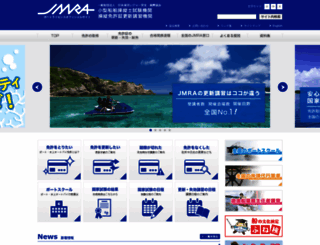小型船舶免許の取得、更新 – 小型船舶操縦士試験機関・講習機関
Page Load Speed
12.2 sec in total
First Response
1.2 sec
Resources Loaded
10.8 sec
Page Rendered
221 ms

About Website
Visit jmra.or.jp now to see the best up-to-date Jmra content for Japan and also check out these interesting facts you probably never knew about jmra.or.jp
ボート免許、水上オートバイ(水上バイク)免許の取得方法や免許証の更新方法についてご案内いたします。
Visit jmra.or.jpKey Findings
We analyzed Jmra.or.jp page load time and found that the first response time was 1.2 sec and then it took 11 sec to load all DOM resources and completely render a web page. This is a poor result, as 90% of websites can load faster.